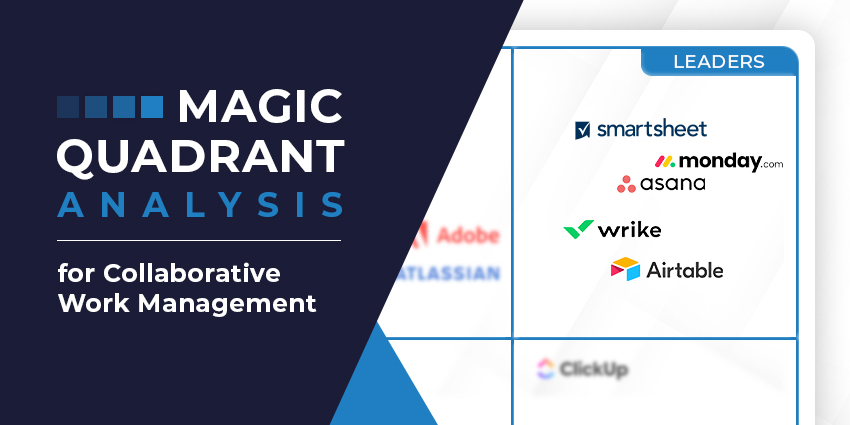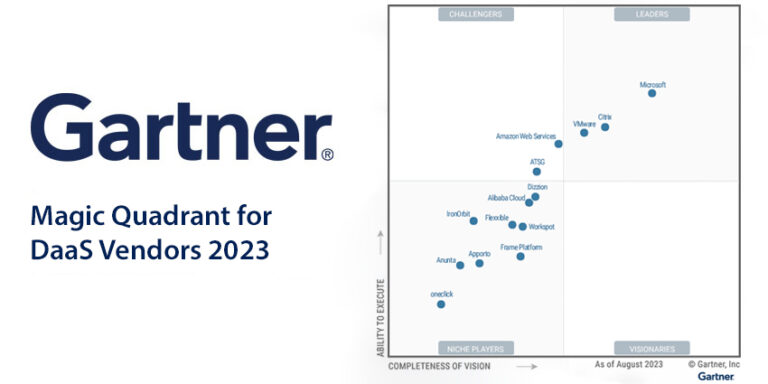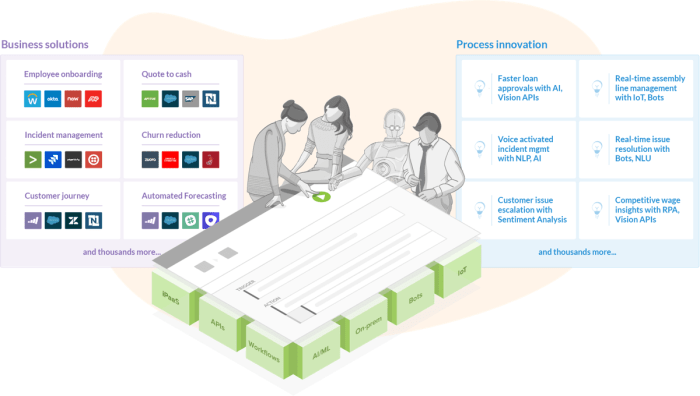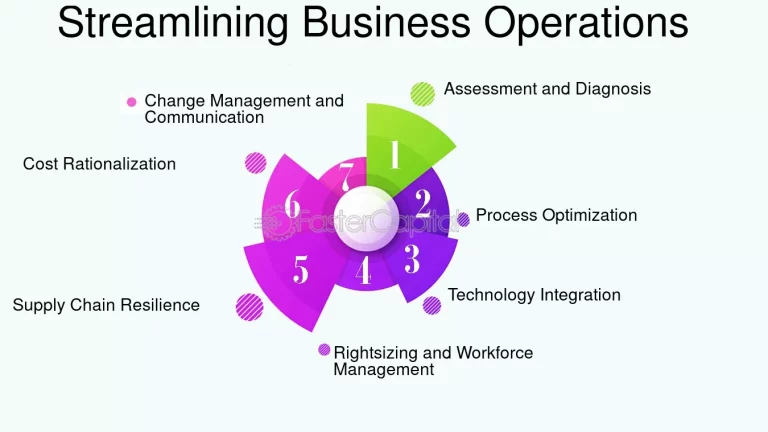Workato Gartner Magic Quadrant A Deep Dive
Workato Gartner Magic Quadrant: This report delves into Workato’s recent performance and strategic positioning within the integration platform as a service (iPaaS) market, as assessed by Gartner. We’ll analyze Workato’s strengths and weaknesses, its competitive landscape, and how the Magic Quadrant report is shaping its future strategy. Understanding this crucial assessment is key to appreciating Workato’s standing in the industry.
The analysis will cover Workato’s position in the Magic Quadrant, examining key differentiators and comparing them to top competitors. It will also explore how the Magic Quadrant influences Workato’s product roadmap and overall strategy. Furthermore, we’ll uncover emerging trends in the iPaaS market and their impact on Workato’s positioning.
Workato’s Position in the Gartner Magic Quadrant

Workato’s recent performance in the Gartner Magic Quadrant showcases a strong position within the Integration Platform as a Service (iPaaS) market. The report highlights Workato’s capabilities and strengths, while also addressing areas for potential improvement. Understanding Workato’s positioning in the Magic Quadrant is crucial for businesses seeking to leverage integration solutions for their operations.
Workato’s Recent Performance Summary
Workato consistently earns recognition for its robust platform and comprehensive feature set. The latest Gartner Magic Quadrant report underscores Workato’s strong capabilities in providing an adaptable and scalable platform for enterprise integration needs. This continued strong showing demonstrates the platform’s value proposition in the dynamic landscape of modern integration solutions.
Workato’s Strengths and Weaknesses
Workato’s strengths are evident in the report’s assessment of its platform. The platform’s ability to handle complex integration scenarios and its extensive connectivity to various applications are key strengths. Furthermore, the platform’s strong community support and extensive documentation contribute to its appeal. However, areas for potential improvement identified in the report include the platform’s user interface and ease of use for non-technical users.
Key Differentiators
Workato stands out from competitors through its intuitive, visual interface and powerful automation capabilities. Its focus on providing an adaptable platform to meet the unique needs of diverse enterprises sets it apart. The platform’s emphasis on a broad range of integrations and its robust security features further distinguish it from competitors. Furthermore, Workato’s comprehensive support services and ongoing commitment to platform innovation contribute to its unique value proposition.
Market Positioning
Workato’s market positioning is firmly within the high-end of the iPaaS market. It targets enterprises requiring a comprehensive and scalable integration platform. The platform’s feature set, adaptability, and emphasis on customization cater to the sophisticated needs of large organizations.
Comparison with Key Competitors
| Vendor | Features | Strengths | Weaknesses |
|---|---|---|---|
| Workato | Robust automation capabilities, extensive connectivity, visual interface, scalable architecture, strong community support | Adaptable platform, handles complex integrations, broad range of integrations, comprehensive documentation, and good security features. | The user interface might be challenging for non-technical users, potential for improvement in ease of use for some users. |
| MuleSoft | Mature platform, comprehensive API management, established brand, strong enterprise focus | Industry-leading platform, comprehensive functionality, extensive integration capabilities | Can be complex to set up and configure, potentially higher cost than some alternatives |
| Boomi | Strong emphasis on pre-built connectors, user-friendly interface, robust security | Ease of use for non-technical users, comprehensive pre-built integrations, scalable architecture | May lack flexibility for highly customized integrations, limited in some areas compared to competitors |
Impact of the Gartner Magic Quadrant on Workato’s Strategy

The Gartner Magic Quadrant report provides a crucial external perspective on Workato’s position in the market. This assessment significantly influences strategic decision-making, impacting product development, marketing efforts, and overall growth trajectory. Workato uses this feedback to refine its approach and maintain a competitive edge.
The report’s evaluation, combined with internal analyses, guides Workato’s product roadmap, driving enhancements and new features. Workato carefully considers the strengths and weaknesses highlighted in the quadrant, shaping future development strategies to address areas for improvement.
Influence on Product Roadmap
Workato’s product roadmap is highly responsive to the Gartner Magic Quadrant. Areas identified as strengths in the report are leveraged to enhance existing offerings and expand market reach. Conversely, areas needing improvement inform product development priorities. This dynamic process ensures Workato’s products align with market needs and expectations, thereby increasing customer satisfaction and market share.
Adaptation of Strategy Based on Quadrant Assessment
Workato adjusts its overall strategy based on the quadrant’s assessment. This involves refining marketing messages to better highlight strengths and addressing weaknesses through targeted product development. Workato also analyzes competitor strategies and adapts its offerings to stay ahead of the curve, using the quadrant’s insights as a compass. Strategic partnerships and alliances are also potentially explored in response to the Magic Quadrant’s evaluation.
Implications on Market Share and Future Growth
A strong position in the Gartner Magic Quadrant positively impacts Workato’s market share and future growth. The quadrant’s credibility fosters trust among potential clients, leading to increased adoption of Workato’s solutions. A favorable placement in the quadrant can also attract top talent, further strengthening Workato’s capabilities and development capacity.
Comparison of Strategies Across Product Lines, Workat,o Gartner Magic Quadrant

Workato’s strategies are tailored to specific product lines, yet consistently align with the overall themes identified in the Magic Quadrant. For example, enhancements to the platform’s automation capabilities, a core strength highlighted in the quadrant, might be prioritized across all product lines. This ensures consistency and effectiveness in delivering value to customers.
Impact on Product Roadmap – Comparison Table
| Product Line | Previous Quadrant Position | Current Quadrant Position | Impact on Roadmap |
|---|---|---|---|
| Integration Platform | Leader | Challenger | Prioritization of enhanced security features, API management capabilities, and improved user interface for enhanced usability, aligning with customer feedback and industry trends. |
| Data Integration | Visionary | Leader | Focus on expanding data governance and compliance features, improving data quality tools, and exploring new data integration technologies. |
| Workflow Automation | Niche Player | Strong Performer | Enhancement of workflow management tools, improved collaboration features, and expansion into new automation scenarios, with a focus on addressing user pain points identified through feedback. |
Workato’s Competitive Landscape & Gartner’s Assessment

Source: cloudfront.net
Workato’s position in the Gartner Magic Quadrant highlights its standing within the competitive iPaaS market. Understanding its key competitors and their respective strengths and weaknesses is crucial for evaluating Workato’s strategic position and prospects. This analysis delves into Workato’s competitive landscape, drawing insights from the Gartner Magic Quadrant.
The Gartner Magic Quadrant provides a valuable framework for understanding the competitive positioning of iPaaS providers. By examining the strengths, weaknesses, and market positioning of competitors, Workato can better understand its own standing and adapt its strategies accordingly.
Key Competitors and their Positioning
Several prominent companies compete within the iPaaS market. Notable competitors include Dell Boomi, MuleSoft (now part of Salesforce), Automation Anywhere, and others. Their varying strengths and weaknesses within the Gartner Magic Quadrant influence their market positions. This analysis will focus on a selection of these competitors.
Workato’s Solutions Compared to Key Competitors
Workato differentiates itself through its intuitive user interface, robust API integration capabilities, and comprehensive support for various cloud platforms. Its solutions often emphasize ease of use and speed of implementation. While some competitors may offer more specialized features, Workato’s comprehensive approach and extensive integrations provide a valuable trade-off for many users.
Workato’s Competitive Advantages and Disadvantages
Workato’s key competitive advantages include its focus on ease of use and its broad range of integrations. This allows for faster implementation and broader application across diverse business needs. However, certain specialized features or capabilities offered by competitors may be considered disadvantages. Workato might need to address these specific niche requirements to maintain its competitive edge in the long run.
Comparative Analysis of Key Competitors
| Competitor | Strengths | Weaknesses |
|---|---|---|
| Workato | Ease of use, broad integrations, strong support for cloud platforms, and robust API capabilities. | Limited niche functionality compared to some specialized competitors. Potential for slower performance on very complex integrations. |
| Dell Boomi | Strong enterprise features, extensive security features, and high reliability. | Steeper learning curve for some users, potentially higher cost of implementation. |
| MuleSoft (now part of Salesforce) | Mature platform with a wide range of features, robust enterprise support. | Potentially higher cost and complex implementation. |
| Automation Anywhere | Strong automation capabilities, strong focus on RPA integration | Fewer iPaaS-specific features, potential gaps in integration breadth |
Emerging Trends and Impact
The iPaaS market is continually evolving. Emerging trends include the increasing demand for low-code/no-code solutions, the need for better integration with AI/ML tools, and the rising importance of security and compliance features. Workato needs to address these emerging needs to maintain its market position and adapt its strategies to the evolving market demands.
Conclusion: Workato Gartner Magic Quadrant

Source: itvoice.in
In conclusion, Workato’s performance in the Gartner Magic Quadrant reveals a strong position within the iPaaS market. The report’s insights highlight both strengths and areas for improvement. Workato’s strategic response to the quadrant’s assessment will be crucial in shaping its future success and growth trajectory. The report’s detailed analysis of the competitive landscape and emerging trends provides a clear picture of Workato’s standing in a rapidly evolving industry.





